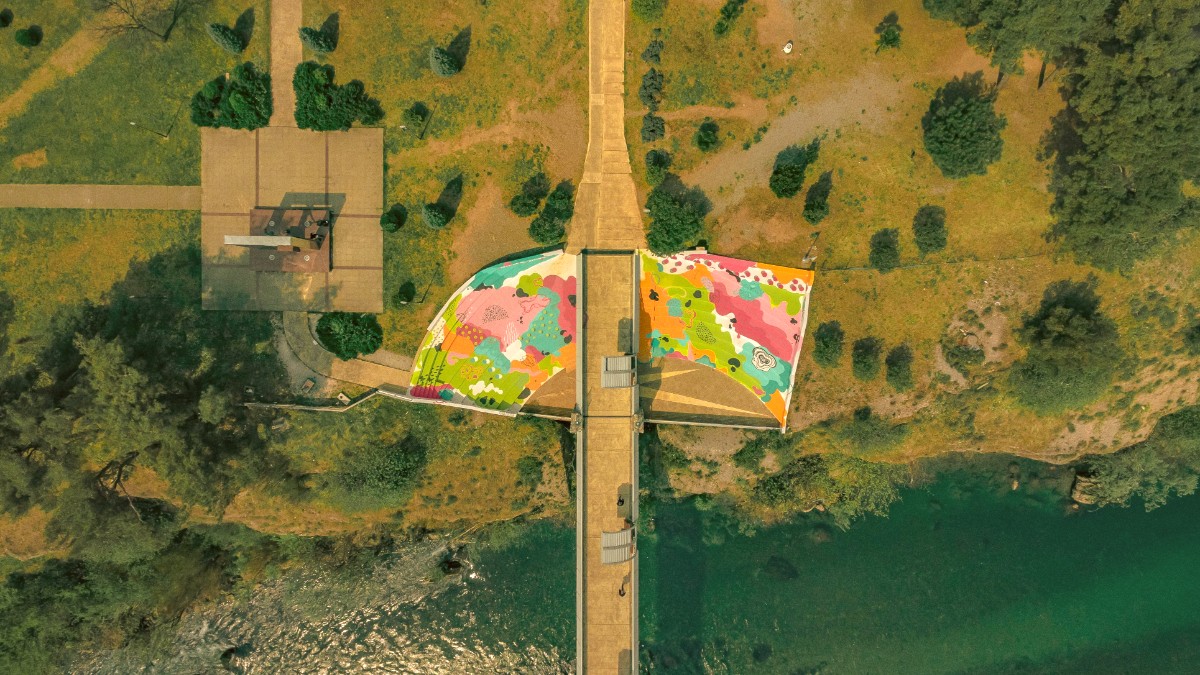
Montenegro
Montenegrin cuisine is a rich blend. Significant influences come from the Ottoman Empire, specifically in dishes featuring minced meat and pastries. Mediterranean influences are present, even inland Podgorica incorporates fresh vegetables and olive oil. Central European (Austro-Hungarian) and Slavic traditions also contribute to the hearty, often meat-based dishes. Cuisine is known for its robust and savory flavors. Fresh, seasonal ingredients are preferred.
Podgorica’s cuisine emphasizes grilled meats, various cheeses, smoked hams (pršut), and vegetables grown in the fertile Zeta Plain.
Lamb, beef, and pork are prominent. Lamb cooked "under the bell" (sač) is a traditional slow-cooked specialty. Grilled meats like ćevapi and pljeskavica are ubiquitous. Njeguški sir (cheese from Njeguši) and Kolašinski sir (Kolašin cheese) are famous. Kajmak, a rich, clotted cream, is popular.
Njeguški pršut, smoked and air-dried ham from Njeguši, is a national delicacy. Fresh seasonal vegetables like tomatoes, cucumbers, peppers, potatoes, and cabbage are widely used in salads and cooked dishes.
Corn flour is used for kačamak. Beans and potatoes are common staples. Simple seasonings, often including paprika, garlic, and local herbs, enhance natural flavors.
Small, grilled minced meat sausages, often a mix of beef and lamb. Typically served in a flatbread (somun) with chopped raw onions and ajvar. Found at grill stands (ćevabdžinica) and traditional restaurants.
Paired with somun, onions, and ajvar.
A famous Montenegrin delicacy. Smoked and air-dried ham, similar to Italian prosciutto but with a distinct, often more intense, smoky flavor. Served as an appetizer in most traditional restaurants, or available at markets.
A national delicacy.
A hearty, thick dish made from corn flour, potatoes, and various cheeses, often including kajmak. Found in traditional Montenegrin restaurants, especially those specializing in rustic cuisine.
Comforting traditional mountain fare.
Strong, unfiltered coffee served in small cups. Widely available and popular in cafes. Coffee is an integral part of Montenegrin social life, with orders often involving extended stays.
Small, fried dough balls, similar to doughnuts. Often served with honey, cheese, or jam. A common breakfast or snack item. Baklava (filo pastry with nuts and syrup) and Tulumbe (fried dough soaked in syrup) are other sweet treats.
A growing number of upscale restaurants in Podgorica offer refined modern Montenegrin cuisine and international dishes. These typically provide a more formal atmosphere, extensive wine lists, and creative culinary approaches. They are suitable for special occasions.
These are abundant throughout the city. They offer a mix of traditional Montenegrin, Balkan, and popular international cuisines, with Italian being a very popular choice. You find comfortable settings and good service at reasonable prices. Many have outdoor seating during warmer months.
Pekare (bakeries) are on almost every street corner for inexpensive and filling breakfast or snacks. Grill stands specialize in ćevapi and pljeskavica for quick, cheap, and popular meat options. Local cafeterias/bistros serve simple, homemade meals at very affordable prices. Markets are excellent spots for fresh produce, local cheeses, and cured meats.
Italian restaurants are very popular and widely available due to geographical proximity and cultural ties.
Find a variety of pasta, pizza, and classic Italian dishes.
You can also find some restaurants offering other international cuisines, like Chinese, Turkish, or other European styles.
Explore different flavors beyond local Montenegrin dishes.
Coffee is an integral part of social life. Cafes are places for socializing and relaxation.
Meals are often leisurely affairs. Do not expect rushed service; take time to enjoy.
Rakija (fruit brandy) is popular as an aperitif or digestif. Local wines and beer are also widely available.
Many restaurants and cafes have a warm, welcoming atmosphere, especially family-run establishments.
Awareness of gluten-free (bez glutena) and other allergens is growing but may not be as widespread as in Western Europe. Carry a Translation card stating needs in Montenegrin.
Larger hotels and upscale restaurants are generally more accommodating. Smaller eateries might have less understanding.
Use Google Translate or a phrasebook. Check online restaurant reviews on platforms like TripAdvisor or Google Maps, filtering for dietary options.
Supermarkets offer products for specific dietary needs, including gluten-free items, for self-catering.
Montenegrin cuisine prioritizes fresh, seasonal produce. In autumn, find more dishes with root vegetables and hearty stews. Winter features richer, more warming dishes and smoked meats.
Podgorica’s dining scene emphasizes traditional Montenegrin hospitality. The emphasis on hearty portions, fresh ingredients, and a welcoming atmosphere is an unique aspect. Look for traditional "konobas" (taverns) for an authentic experience.
Burek is the most popular street food, perfect for a quick, tasty meal. Ćevapi and Pljeskavica are also readily available from grill stands, offering quick and flavorful meat options.
Possible in surrounding rural areas. Visit vineyards for wine tasting, especially those producing Vranac wines, or farms that produce Njeguši pršut and cheese.
Check local event calendars for food-related festivals. These often occur in spring or autumn and celebrate local produce, wines, or traditional dishes.
Small, fried dough balls, similar to doughnuts. They are often served with honey, cheese, or jam. A common breakfast or snack item.
A sweet and versatile local treat.
Baklava is a sweet pastry with layers of filo dough, chopped nuts, and a sweet syrup or honey, showing strong Ottoman influence. Tulumbe are fried dough soaked in syrup, another Ottoman-inspired sweet treat.
Indulge in these rich, traditional desserts.
Meals are often leisurely affairs. Do not expect rushed service. Savor the experience and the relaxed pace of Montenegrin dining.
For specific dietary needs or allergies, clear communication with staff is paramount.
For an authentic experience, seek out traditional "konobas" (taverns) which often serve hearty, homemade Montenegrin dishes in a welcoming atmosphere.
Montenegrin hospitality extends to its food. Portions are often generous, so come hungry! Embrace the local coffee culture; it's a social ritual.